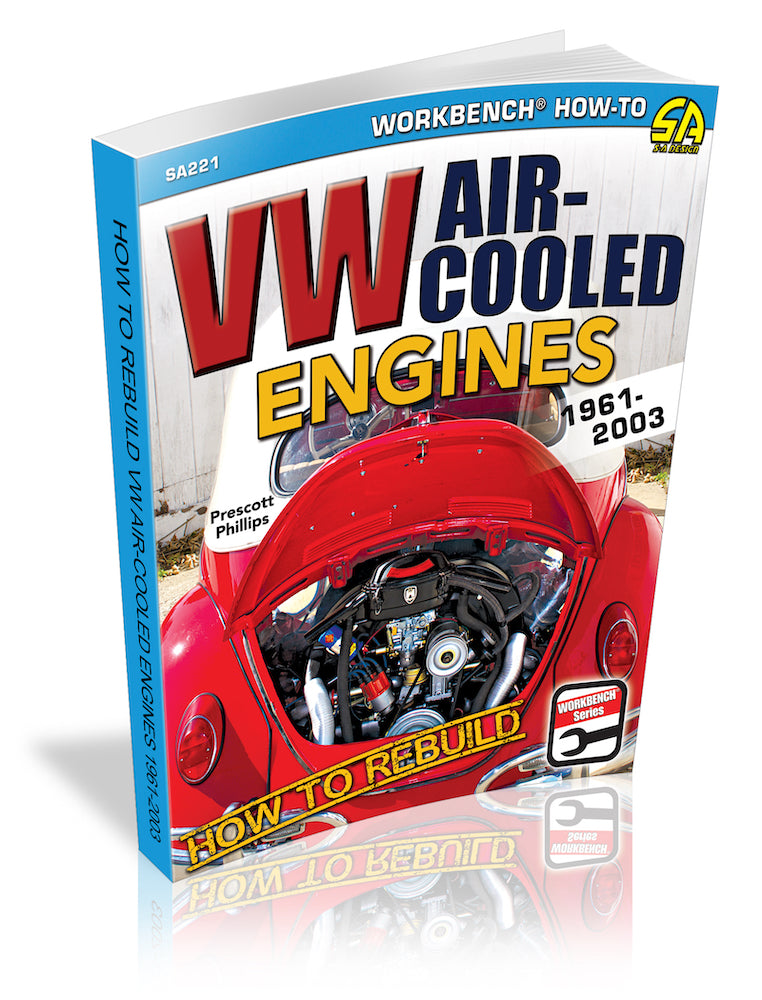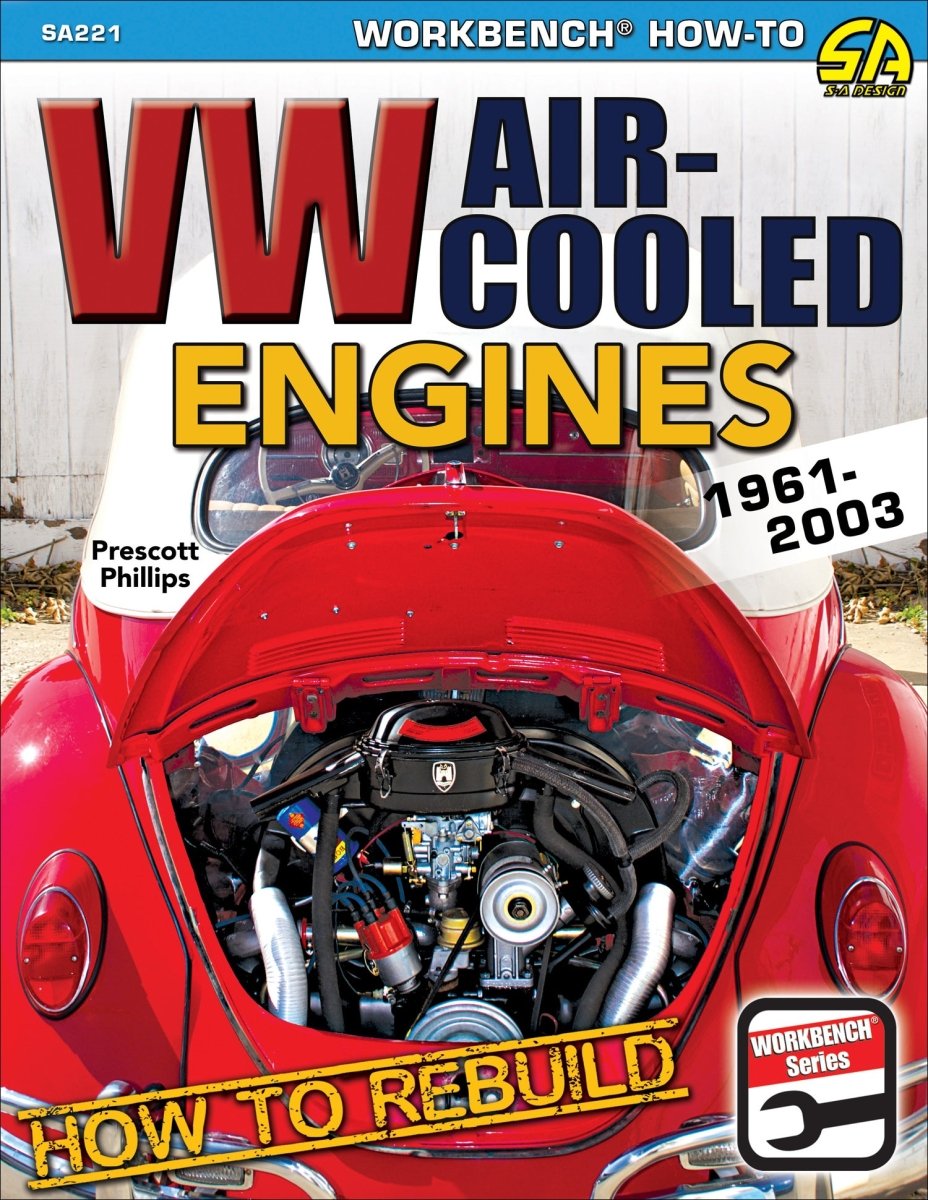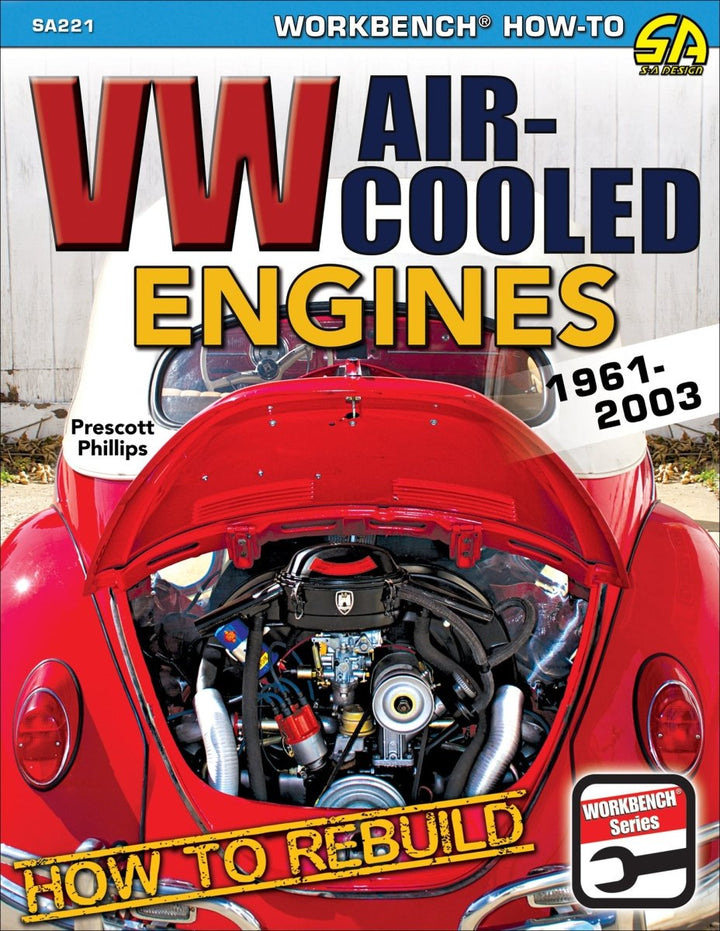Rebuild your Volkswagen’s air-cooled engine with confidence and get your beloved boxer back on the road.
How to Rebuild VW Air-Cooled Engines: 1961-2003 offers beautiful color photos with insightful step-by-step captions for expertly rebuilding Volkswagen air-cooled engines and provides in-depth, hands-on information for disassembly, inspection, machining, parts selection, preassembly, final assembly, installation, and tuning.
Not only are the procedures for rebuilding covered in depth but engine model types, identification codes, specifications, and details are also covered in a manner that allows the user to source a good later-model candidate for rebuilding and helps retrofit the modern engine designs into earlier chassis.
This resource focuses on the VW Type 1, 2, and 3 engines beginning in the year 1961, when a significant redesign improved the reliability, durability, and horsepower of the basic initial design. For more than 70 years, automotive enthusiasts and the public in general has embraced the VW air-cooled engine for its simplicity, its capacity to be modified, and its bulletproof reliability.
One of the most widely used and versatile internal combustion engines in the world, this engine has powered VW Beetles, Buses, Porsche 914s, off-road buggies and rails, formula race cars, and many other machines both on and off-road. From 1938 until 2003, more than 21 million Beetles equipped with an air-cooled rear-mounted engine were produced.
If you have any interest in reviving your old VW, or perhaps are researching the purchase of one, this handy guide will cover all the bases in bringing that old air-cooled powerplant back to life.
About the Author
Acknowledgments
What Is a Workbench Book?
Chapter 1: Before You Begin
A Brief History of the VW Flat 4 Engines
Engine Identification
Is This Engine Worth Rebuilding?
Planning
Work Area
Tools
Our Engine
Chapter 2: Engine Disassembly
Spotting a Rebuilt Engine
Be Patient
Get Organized
Engine Disassembly
Parts to Keep and Parts to Replace
Chapter 3: Parts Cleaning and Inspection
Cylinder Heads
Rocker Assemblies
Pushrods
Lifters
Camshaft
Connecting Rods
Crankshaft
Flywheel
Flywheel Gland Nut
Oil Pump
Oil Cooler
Engine Case
Chapter 4: Machine Shop
Choosing a Machine Shop
Engine Case Machining Procedures
Head Rebuilding Procedures
Post-Machine Shop Procedures
Chapter 5: Component Preparation
Engine Case
Head Studs
Internal Components
Long-Block Cooling Tin
Chapter 6: Preassembly
Preset the Flywheel Endplay
Scribe the Main Bearings
Gap the Piston Rings
Install the Rings on the Pistons
Chapter 7: Final Assembly
Crankshaft
Engine Case Preparation
Join the Two Halves
Flywheel
Piston
Barrel
Cylinder Heads
Oil Pressure Relief Valves
Full-Flow Filter Oil Pump Upgrade
Sump Plate
Valvetrain
Adjusting the Valves
Chapter 8: Accessory Installation
Important Questions to Ask Yourself
Carburetor: Rebuild or Replace?
Installing Accessories
Exhaust System
Chapter 9: Startup, Break-In, and Adjustments
Building a Test Stand
Installing an Engine on a Test Stand
Installing a 12V Starter in a 6V Transmission
Installing a 12V Engine in a 6V Transmission
Installing the Clutch and Pressure Plate
Vehicle Installation
Start the Engine
Appendix
Source Guide





